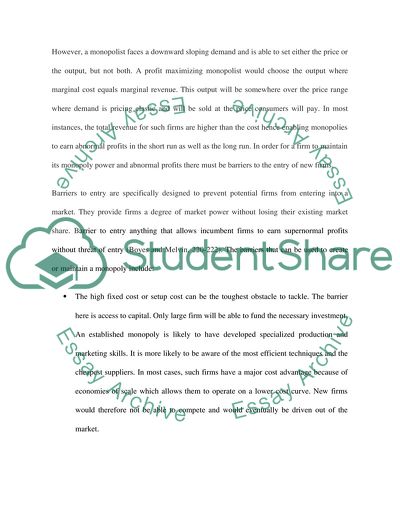Cite this document
(“Discuss the major barriers to entry of new firms into an industry and Essay”, n.d.)
Discuss the major barriers to entry of new firms into an industry and Essay. Retrieved from https://studentshare.org/macro-microeconomics/1577912-discuss-the-major-barriers-to-entry-of-new-firms-into-an-industry-and-how-these-barriers-can-either-give-rise-to-or-maintain-a-monopoly-company
Discuss the major barriers to entry of new firms into an industry and Essay. Retrieved from https://studentshare.org/macro-microeconomics/1577912-discuss-the-major-barriers-to-entry-of-new-firms-into-an-industry-and-how-these-barriers-can-either-give-rise-to-or-maintain-a-monopoly-company
(Discuss the Major Barriers to Entry of New Firms into an Industry and Essay)
Discuss the Major Barriers to Entry of New Firms into an Industry and Essay. https://studentshare.org/macro-microeconomics/1577912-discuss-the-major-barriers-to-entry-of-new-firms-into-an-industry-and-how-these-barriers-can-either-give-rise-to-or-maintain-a-monopoly-company.
Discuss the Major Barriers to Entry of New Firms into an Industry and Essay. https://studentshare.org/macro-microeconomics/1577912-discuss-the-major-barriers-to-entry-of-new-firms-into-an-industry-and-how-these-barriers-can-either-give-rise-to-or-maintain-a-monopoly-company.
“Discuss the Major Barriers to Entry of New Firms into an Industry and Essay”, n.d. https://studentshare.org/macro-microeconomics/1577912-discuss-the-major-barriers-to-entry-of-new-firms-into-an-industry-and-how-these-barriers-can-either-give-rise-to-or-maintain-a-monopoly-company.


